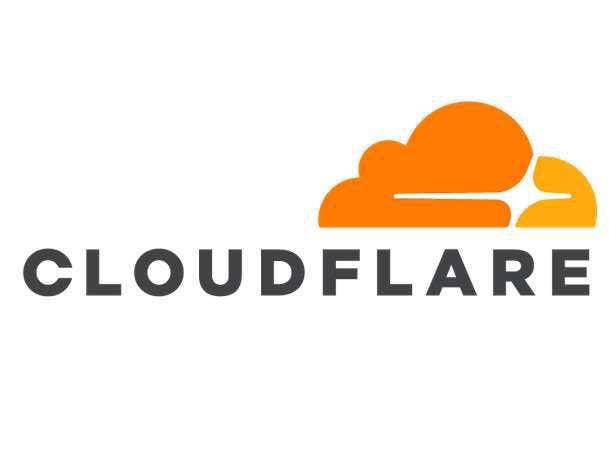Cloudflare Earnings Takeaways: Zero Trust, Generative AI Security, Channel Growth
Highlights of the company’s Q4 included a major zero trust security deal with a Fortune 500 customer — and Cloudflare “worked with a large channel partner to win and service this customer,” said co-founder and CEO Matthew Prince.

Cloudflare co-founder and CEO Matthew Prince
Zeroing In On Growth
Cloudflare’s push into the zero trust security space continues to gain traction even with the economic slowdown, co-founder and CEO Matthew Prince (pictured) said Thursday. The continued momentum is thanks in no small part to the expansion of the company’s work with channel partners, which notably produced a large channel-driven deal with a Fortune 500 energy company during the fourth quarter, Prince said during Cloudflare’s quarterly call with analysts.
[Related: 10 Hot SASE Companies To Watch In 2023]
For the fourth quarter, ended Dec. 31, Cloudflare beat the expectations of Wall Street on both revenue and profits — a feat that many other major tech companies have been unable to pull off lately. Another big customer deal during the quarter also helped to buoy the strong results, Prince said. The deal was with an unnamed customer in the generative AI space, which saw “unprecedented rates of adoption” for its browser-based service after debuting it in late November, Prince disclosed. That description, of course, matches OpenAI and its ChatGPT chatbot service, and it was already known that Cloudflare’s security service is indeed protecting the ChatGPT site.
Ultimately, the growth for Cloudflare goes back to its core advantage — its global network — which serves as a “fundamental barrier to entry” against anyone who would try to replicate what the company is doing, Prince said during the quarterly call. The company, he noted, has spent 12 years building this network (which now spans more than 100 countries and 275 cities in total, according to Cloudflare’s website). The Cloudflare network “is not something that you can just throw money at and buy your way into,” Prince said. “It’s not something that even some of the large, hyperscale public clouds have.” Cloudflare, he said, often hears “from companies like Microsoft” that the company’s network is “very different than anything else that’s out there.”
“What’s different about us is we have relentlessly said that we would run one single network, and every single server across our entire network is capable of running and performing any of the functions that we may need it for,” Prince said. “And so that means that as we grow our services, it allows us to deliver them incredibly quickly, incredibly efficiently, and anywhere in the world. And that is paying off today by allowing us to continue to scale as efficiently as possible.”
All in all, “I think it would be very challenging today for somebody to replicate the network that we have,” he said. That network enables Cloudflare to continually deliver additional services, Prince said — from its traditional application services, to its zero trust services, to its newer services in compute and storage.
During the Cloudflare Q4 earnings call Thursday, Prince also discussed the challenge that the company sees ahead around raising customer awareness of its offerings beyond its well-known web performance and distributed denial-of-service (DDoS) mitigation services. Regardless, he said the company is on track to meet its growth goals over the longer term. “We continue to be committed to our goal of getting a $5 billion run rate in five years from last quarter,” Prince said. Cloudflare’s stock price rose 10 percent in after-hours trading Thursday to $64 a share.
What follows are five key takeaways from Cloudflare’s Q4 2022 earnings report and quarterly call.

Beating Forecasts
While the economic slowdown has caused many tech companies to fall short of analyst expectations for their latest financial results — and many have laid off staff, as well — Cloudflare so far has done neither. For the fourth quarter, revenue climbed 47 percent year-over-year to reach $274.70 million, beating the analyst consensus estimate of $274.02 million. And on earnings, Cloudflare saw non-GAAP net income of 6 cents per diluted share during the fourth quarter, compared to the 4 cents that was anticipated by an analyst consensus. “We had another strong quarter in spite of continued challenging macroeconomic conditions,” Prince said during the quarterly call Thursday.
In Q4, Cloudflare added 134 “large” customers — which it defines as customers paying more $100,000 per year to the company — bringing Cloudflare to 2,042 large customers in total, according to Prince. That includes 33 percent of the companies in the Fortune 500, he said.
Still, “like others in the industry, we’re seeing customers take longer to sign new and expansion deals with us,” Prince said. In response to the economic environment, “we have our hands on the levers of our business, and are adjusting them based on the macroeconomic conditions,” he said. Cloudflare has not disclosed staff cutbacks thus far, however, because it was quicker to pump the brakes on hiring than some others in the tech industry, Prince said.
“We started to see a slowdown in the economy all the way back in December of 2021,” he said. “Based on that, around this time last year, we began slowing our pace of hiring to ensure we didn’t get over our skis. That paid off and kept us from having to take more drastic actions like many of our peers.”
Meanwhile, Cloudflare delivered strong guidance for its full-year 2023 results, saying it’s expecting revenue of between $1.33 billion an $1.34 billion and non-GAAP net income per share of 15 cents to 16 cents, both of which topped analyst predictions.

Demand For Newer Products
While Cloudflare does not disclose revenue figures for its individual product segments, Prince suggested Thursday that the newer products in its portfolio — those beyond its widely used web performance, DDoS and web application firewall solutions — are seeing strong demand. Cloudflare’s march into zero trust security has brought it into competition with the likes of Zscaler and Palo Alto Networks, with a selection of services including zero trust network access (ZTNA), secure web gateway (SWG) and browser isolation. The company is also competing with public cloud platforms such as AWS with offerings such as its R2 cloud object storage service and Workers serverless compute service.
During the call Thursday, Prince said he thinks of the company’s original application services as its “first act,” whereas zero trust is act two for Cloudflare and Workers is act three. Across the newer areas, “I think that they’re maturing at rates that continue to make us very excited and happy, and we’re seeing more and more new use cases that are coming from that,” he said. When asked specifically about the traction for the newest products such as R2 — which directly competes with Amazon S3, in part through eliminating data-egress fees — Prince answered that “I think we’re really happy with the ramps of those new products.”
On zero trust, Prince pointed to last quarter’s deal with a Fortune 500 energy company as a key sign of Cloudflare’s momentum. The three-year deal is worth $1.6 million, and “was a takeout of a first-generation zero trust networking competitor,” he said. “We are replacing both their secure web gateway and zero trust network access products. Because the competitor’s network is actually broken into multiple distinct clouds, as compared with our unified network, their reliability and performance were underperforming the customer’s expectations.”
The energy company customer ended up purchasing Cloudflare’s ZTNA, SWG, remote browser isolation and DNS filtering services, Prince said during the call.

Channel-Led Deals
Crucially, on Cloudflare’s major deal with the Fortune 500 energy company last quarter, “we worked with a large channel partner to win and service this customer, and expect we’ll be doing more with them going forward,” Prince said during the quarterly call. Cloudflare is not disclosing the name of this partner, the company told CRN Thursday.
In June 2022, the company announced the launch of the Cloudflare One Partner Program, which aims to enable channel partners such as resellers and systems integrators to more effectively deliver the company’s platform for zero trust remote access — known as secure access service edge (SASE) — to customers. Later on during the call, after a question about the company’s work with the channel, Prince added that “I think that channel remains a big opportunity for us.”
“But we’re proud of the progress that we’ve made. And it’s a real priority for [President of Revenue] Marc [Boroditsky]. I think that we’re seeing both the traditional resellers as well as some of the GSIs that are increasingly adopting Cloudflare. And I think the big opportunity here is really with those act two [zero trust products] — and then to some extent those act three [Workers] products,” Prince said. “And so we’re seeing that in act two products, those are very much products that oftentimes we are winning in cooperation with the channel partner. And those initial wins help unlock future wins going forward.”
In terms of the “act three” Workers products, customers are increasingly going to partners for help with consolidating vendors and saving money on their cloud spending, he said. “We’re seeing more and more that Cloudflare is a solution that is in the toolkit for people who are trying to figure out how they can save money. So moving from an S3 to an R2 is a substantial savings.”

Generative AI Customer
During the fourth quarter, “a leading generative AI company signed a one-year, $1 million deal” with Cloudflare, Prince said during the call. The generative AI company had used Cloudflare’s free-tier services since 2017, “and this deal originally started out as a relatively small gateway DNS opportunity to replace Cisco Umbrella,” Prince said. “However, when their browser-based application debuted in late November, demand for the company’s AI-generated content absolutely exploded, with unprecedented rates of adoption.”
In the wake of that surge in demand, the generative AI company’s “Azure Front Door setup quickly proved insufficient at handling the massive load on their services from legitimate users, as well as keeping fraudulent users from exhausting their resources,” Prince said. The customer “started off with CDN, DDoS, bot management, gateway DNS and more. We are actively exploring various paths for expansion to support their incredible growth, as well as emerging use cases of their AI models and applications with Cloudflare Workers, API shields, image resizing and more.”
The details about the generative AI customer match those of ChatGPT developer OpenAI, though Cloudflare declined to confirm the name of the customer when asked by CRN Thursday. OpenAI, which is also behind the DALL-E 2 image generator, was already previously known to use Cloudflare for helping to secure ChatGPT.

‘Challenge’ On Awareness
When asked about Cloudflare’s win rates against its top competitors in zero trust, Prince said that while the company is “really happy with with our win rates,” there’s still more work to be done on raising customer awareness.
In the zero trust market, “I think our challenge [isn’t around] winning customers that know about us, but making sure that customers that are in the market for zero trust services are aware that that’s something we do,” he said. “A frustration that I still have is when I’ll meet with a customer, and oftentimes they’ll literally say, ‘You should build something that is in the zero trust space, competing with a Zscaler or a Palo Alto Networks.’”
For deals that Cloudflare is able to compete in, “we find ourselves winning very often,” Prince said. “I think we are especially successful with very technical, rigorous companies that measure performance and care about making sure that they have the best possible end user, and especially developer, experience. But our challenge now is … how in that space do we increase our awareness? And I think you’re going to see a lot of us doing that. But when we’re in the deal, we tend to have very, very strong win rates that rival what we see from our other products.”